In this article, I’ll discuss the implementation of a GPS stabilized 10Mhz. reference clock. For my requirements, the rubidium clock is a Stanford Research FS-275, which can be phase locked to a 1 pps reference. This is further GPS stabilized by coupling a GPS time receiver 1pps sync pulse to the rubidium clock 1pps input. This is primarily for correcting long term drift in precision timing applications. The rubidium crystal will age at a rate ~5e-9 long term, which can be improved to ~1e-12 by using GPS lock.
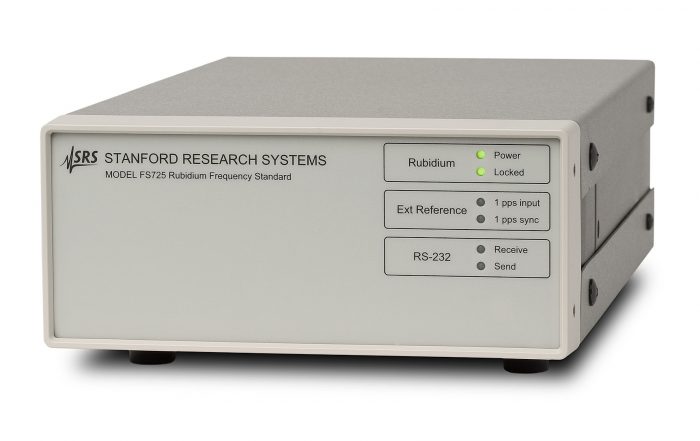
For GPS stabilization, a Ublox F9T receiver module was implemented with a central GPS antenna optimally located for accuracy. Unfortunately, the Ublox F9-T 1pps output signal was unsuitable from a signal level (lvmos vs cmos-ttl). and required a signal translation pwb to both translate the signals and sharpen the Tr pulse to <5 nsec. to achieve the performance we want. The design is presented below:
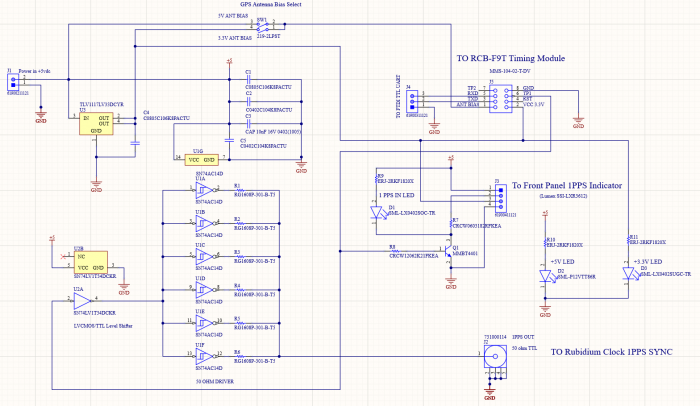
As shown we translate the incoming 3.3v timing pulse to lvcmos(~5v) levels through a level shifter & then buffer the timing pulse through a hex schmitt driver to attain some drive capability. This presents a 50 ohm Z to the Rb clock. There is also a 3.3/5v selector for the GPS antenna bias tee. I’m currently using a Trimble timing antenna with a 5v bias. A couple regulators & indicators round out the design.
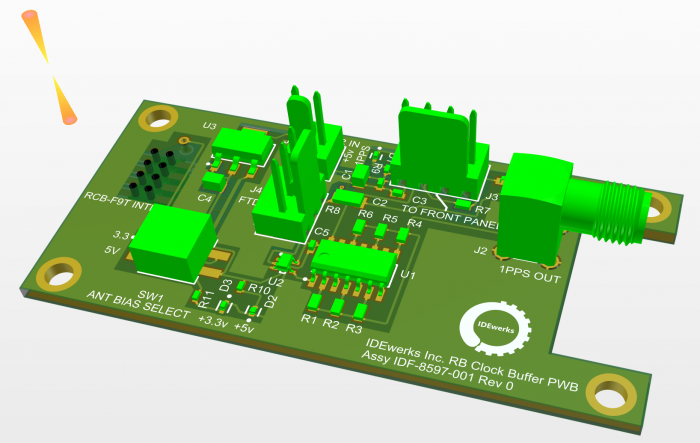
This all gets mounted in a small Al enclosure along with the Ublox receiver in a sandwich configuration. Note there is a USB interface for C^3 with the UBLOX F9T receiver. Ublox distributes a windoze app for setting the various parameters & monitoring performance. From a Ublox perspective, this is a TTL level serial interface, which we then convert to RS-232 via an internal TTL-USB dongle (Realtek). 
When setting the system up, we need to inform the F9T of our antenna delay. This was accomplished during the prototype analysis stage, the following trace plot shows the performance:
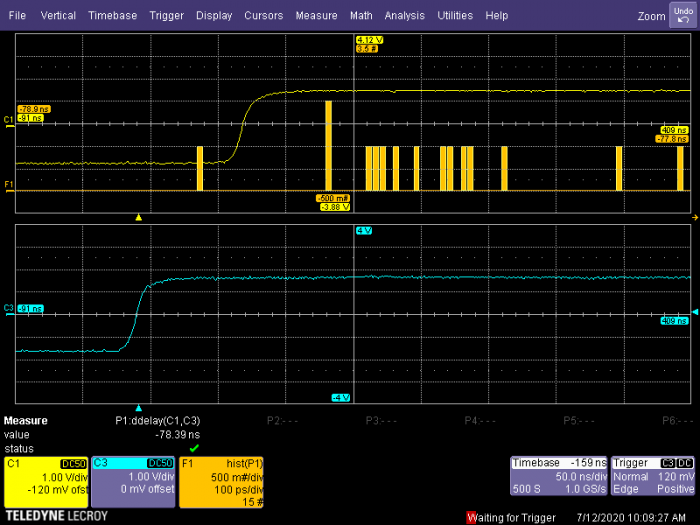
In our case, we have a measured cable delay of 78.39 nsec., this is then plugged into the ublox firmware to inform the receiver of the cable length. As can be seen, the edges are clean with very little ringing albeit a little slow. Slower rise times for this application are generally ok as long as transition is clean and consistent. With this configuration, we can achieve >10^-13 Allan variance (<2e-12 without GPS stabilization) which is best used for short term stability. Phase noise for the FS275 is very good, although I have not evaluated the phase noise when phase locked to 1pps. I would not anticipate an effect, as the RBclock uses a VERRRY long time constant for the control loop. 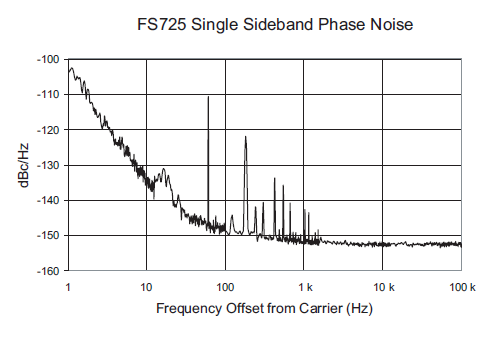
Long term stability is much improved over the standalone Rb clock. As noted the Rb crystal will age at 5e-9 over 20 years uncorrected (other than periodic calibration to remove the aging offsets). This can be improved to >1e-12 for short term stability performance.
